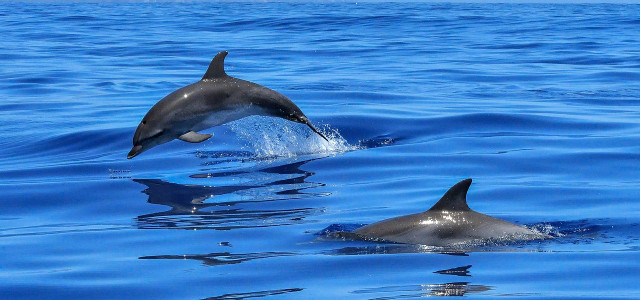Can tuna really be dolphin safe? Research suggests that dolphin-friendly labels, familiar to most shoppers, are not as friendly as they may seem.
“Dolphin-safe” labels are used by many tuna companies in order to minimise concern over dolphin deaths within commercial tuna fishing. The labels originated in the US in 1990, after a number of reports of dolphin fatalities within the fishing industry. Concerns escalated in 1987, when Samuel LaBudde, an American biologist and environmentalist, posed as un undercover chef on a tuna boat, with support from Earth Island Institute and the Marine Mammal Fund.
Over the four months LaBudde was onboard, he took film footage of hundreds of dolphins trapped in fishing nets, and ultimately dying. By the early 1990s a vast majority of tuna companies around the world (over 800), began using the “dolphin-safe” label. It is against US law, more specifically the Dolphin Protection Consumer Information Act, to label canned tuna as “dolphin-safe” if caught by setting nets on dolphins, or causing dolphin fatalities.
“Dolphin-Safe”: The Promises
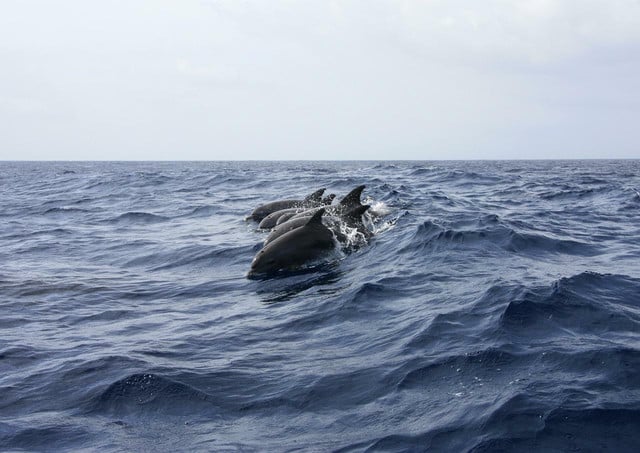
(Foto: CC0 / Pixabay / gillag)
When labelling began, the US passed the Dolphin Protection Consumer Information Act, to regulate “dolphin-safe” practices. This was part of the Marine Mammal Protection Act — a national policy established to prevent marine mammals from declining to the point at which they no longer function as part of a healthy ecosystem.
David Phillips, director of the International Marine Mammal Project of the Earth Island Institute — the company who first proposed the dolphin safe label — remarks that the “dolphin-safe” tuna program has resulted in the largest decline in dolphin fatalities in history. Phillips suggests that since the label was introduced, more than 100,000 dolphins every year have been saved from slaughter. However, there are conflicting reports, which cast doubt upon the wellbeing of dolphins within the fishing industry.
Which “Dolphin-Safe” Labels Are There?
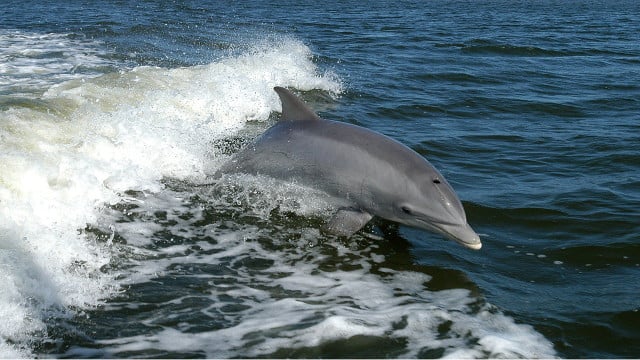


(Foto: CC0 / Pixabay / janeb13)
The US Commerce Department Label
The most well known “dolphin-safe” label is that of the US Commerce Department, recognizable by the writing on the label itself. In 1997, Congress removed the import embargo on tuna caught with nets and re-worked the meaning of “dolphin-safe”. Following this, in 2002-2003, the National Marine Fisheries Service concluded that the tuna fisheries practice of encircling dolphins to catch tuna, resulted in no significant adverse impact on dolphin populations in the eastern Pacific. This statement went against conservation groups (including Seas At Risk, Whale and Dolphin Conservation, the International Fund for Animal Welfare, ClientEarth, and the World Wildlife Fund) claims that thousands of dolphins, in particular baby dolphins, were, and still are being killed by tuna fishing nets.
The “Dolphin Safe Fishing” Label
You might also come across a black-and-white label that only shows the outline of a dolphin with the word “safe” in capital letters written below it. This is a label maintained by the International Marine Mammal Project. With this project, the Earth Island Institute is hoping to reduce bycatch in agreement with tuna companies. You can also find a list of their approved dolphin-safe companies. The World Trade Organization as well as several environmental groups have criticized this label for a failure of strict oversight.
The Flipper Seal of Approval
Hawaiian NGO EarthTrust maintains the Flipper Seal of Approval, which shows a cartoon dolphin with the words “FLIPPER Seal of Approval”. It regulates the use of nets when catching tuna and requires its own observers to monitor fishing processes in order for a company to earn the seal.
Dolphins and Other Bycatch



(Foto: CC0 / Pixabay / adege)
More than 90,000 dolphins are still killed annually by commercial tuna fishing, according to a report by the Natural Resources Defense Council. They are one of a number of species termed as bycatch. Other bycatch species include turtles, octopus, swordfish, seals and sea-birds, amongst many others. The World Wildlife Fund suggest a combined estimate of 300,000 deaths, taking into account small whales, dolphins, and porpoises. These unwanted, often dead or injured bycatch, are usually discarded and thrown back into the ocean. In 2022, 80 dead dolphins washed onto a turkish beach, believed to be victims of fishing net fatalities, according to the Turkish Marine Research Foundation.
Dolphin mortality is so high possibly because they swim close to the surface. Spotting dolphins can also be an indication that tuna are nearby, as the two species often swim together. The only type of tuna that dolphins tend not to swim with is the small skipjack variety — however, opting for only eating skipjack doesn’t solve the issue, due to some companies not specifying which tuna is in their products.
Concerns Over the “Dolphin-Safe” Labels
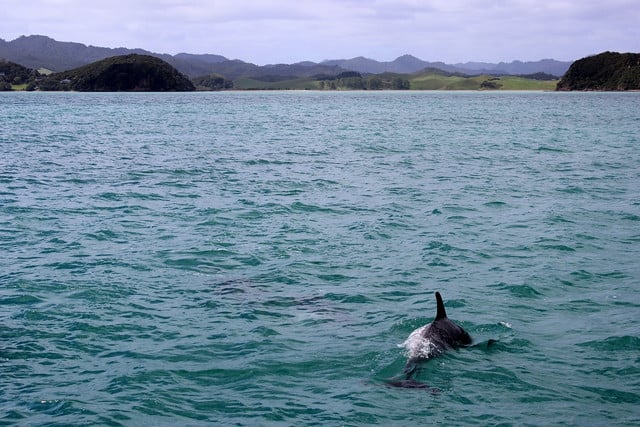


(Foto: CC0 / Pixabay / Ildigo)
Controversy over the “dolphin-safe” label has grown over recent years, due to a number of reasons:
- Tuna companies around the world only adhere to the standards on a voluntarily basis.
- The US Consumers Union suggest that the “dolphin-safe” label is misleading, as verification of standards is also not universal.
- Regulation is often not carried out by objective parties (but surprise inspections are still in place).
- There is a contentious issue that one of the the label’s originators, Earth Island Institute — receive donations from the companies it verifies.
- A deeper concern over the sustainability of our oceans in general, leading to environmental scientists asking if we should be eating tuna at all — the “dolphin-safe” label was a movement to protect dolphins, and is no indication of tuna sustainability, according to the environmental organisation Greenpeace.
Sustainability
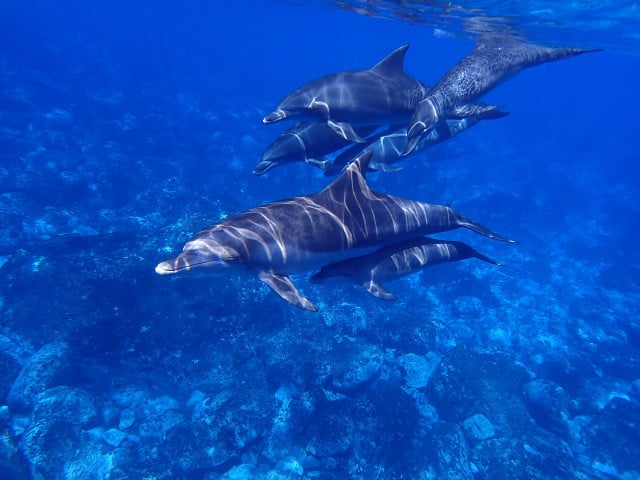


(Foto: CC0 / Pixabay / AJRPROJ)
In 2020, Ryan Bigelow, senior manager of the Monterey Bay Aquarium’s Seafood Watch program, gave an interview to National Geographic, explaining that a lot more needs to be done regarding the “dolphin-safe” label. He concluded that the label is indeed misleading, as many people think that no dolphins are being killed.
Today, the fishing industries use techniques which take far more species out of the sea than can naturally be replenished. The nets and lines utilised by large fishing vessels can be upto 50 or 60 miles in length, and have baited hooks every few feet. This means regulation is almost impossible. The catch is large and ultimately indiscriminate.
Alongside the unwanted bycatch, naturally a vast number of tuna are taken from the oceans. Tuna, like all other fish, have a place in Earth’s ecosystem. Tuna are big, fast moving fish. They are fleshy fish, which is the reason for the amount of commercial tuna fishing — they make money for the companies who catch them. How many tuna are taken from the ocean annually? The current estimate of 60,000 tons each year (by the World Wildlife Fund), is considered an under-estimate at that, according to the Young Peoples Trust For the Environment.
Alternatives to Tuna
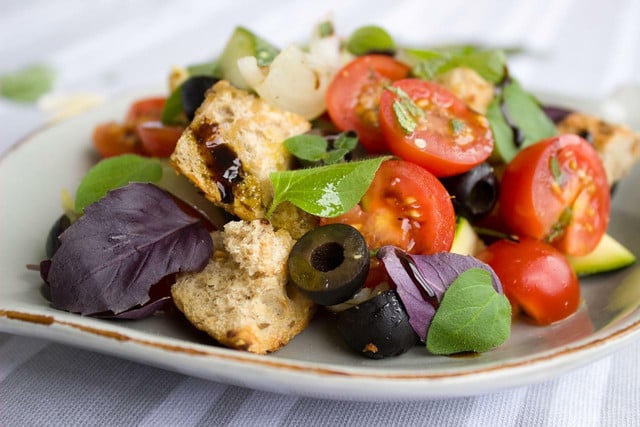


(Foto: CC0 / Pixabay / Einladung_zum_Essen)
The good news is that there are plenty of alternatives to consuming tuna, which in effect will assist dolphins, tuna, and other bycatch species. If you would like to try some alternatives, more recipes are appearing which offer different food choices, such as no-tuna mayo, one of our vegan onigiri fillings.
You may also wish to try one of our other delicious seafood alternatives:
- Vegan Fish Sauce: The No-Fish Sauce You Can Make at Home
- Vegan Lox Recipe: Plant-Based Smoked Salmon
- Vegan Calamari Recipe: Make It Taste Like the Real Thing
- 5 Shrimp Substitutes for Vegans
Read more:
- 8 Things You Can Do to Save the Ocean
- The Best Anchovy Substitutes: 6 Vegan Alternatives
- Coral Bleaching: Why Reefs Are Dying – and How to Help
Do you like this post?






